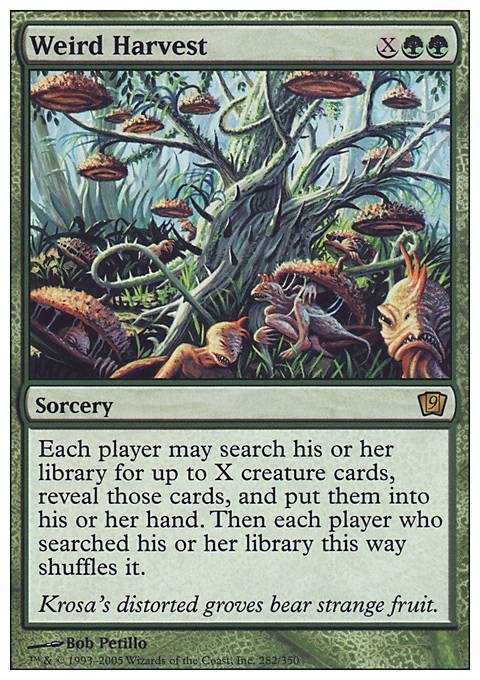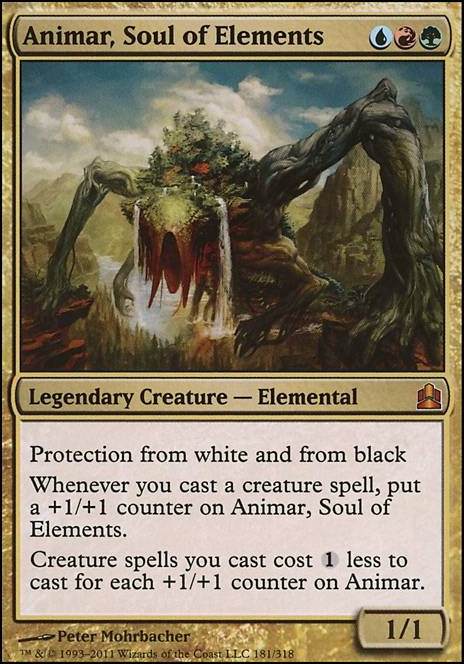Creature (41)
- 1x Ancestral Statue
- 1x Arbor Elf
- 1x Bane of Progress
- 1x Beast Whisperer
- 1x Beastcaller Savant
- 1x Birds of Paradise
- 1x Bloom Tender
- 1x Bond Beetle
- 1x Cloud of Faeries
- 1x Consecrated Sphinx
- 1x Destiny Spinner
- 1x Dockside Extortionist
- 1x Elvish Mystic
- 1x Elvish Spirit Guide
- 1x Eternal Witness
- 1x Fauna Shaman
- 1x Fyndhorn Elves
- 1x Generous Patron
- 1x Gilded Drake
- 1x Imperial Recruiter
- 1x Kiri-Onna
- 1x Llanowar Elves
- 1x Loyal Drake
- 1x Mulldrifter
- 1x Painter's Servant
- 1x Peregrine Drake
- 1x Phantasmal Image
- 1x Phyrexian Metamorph
- 1x Priest of Titania
- 1x Prowling Serpopard
- 1x Rishkar, Peema Renegade
- 1x Runic Armasaur
- 1x Siren Stormtamer
- 1x Slithermuse
- 1x Spellseeker
- 1x Spellskite
- 1x Sylvan Safekeeper
- 1x Tishana, Voice of Thunder
- 1x Walking Ballista
- 1x Wall of Roots
- 1x Wild Cantor
Land (31)
- 1x Ancient Ziggurat
- 1x Arid Mesa
- 1x Bloodstained Mire
- 1x Botanical Sanctum
-
1x
Breeding Pool

- 1x City of Brass
- 1x Command Tower
- 1x Exotic Orchard
- 1x Fiery Islet
- 1x Flooded Strand
- 1x Forbidden Orchard
- 1x Gaea's Cradle
- 1x Mana Confluence
- 1x Misty Rainforest
- 1x Polluted Delta
-
1x
Reflecting Pool

- 1x Scalding Tarn
- 1x Snow-Covered Forest
- 1x Snow-Covered Island
-
1x
Steam Vents

-
1x
Stomping Ground

- 1x Taiga
- 1x Tarnished Citadel
- 1x Thran Quarry
- 1x Tropical Island
- 1x Verdant Catacombs
- 1x Volcanic Island
- 1x Waterlogged Grove
- 1x Windswept Heath
- 1x Wooded Foothills
- 1x Yavimaya Coast
Artifact (4)
Commander (1)
Instant (11)
- 1x Ancient Animus
- 1x Brainstorm
- 1x Chord of Calling
- 1x Crop Rotation
- 1x Dispel
-
1x
Flusterstorm

- 1x Mystical Tutor
- 1x Pact of Negation
- 1x Swan Song
- 1x Veil of Summer
- 1x Worldly Tutor
Enchantment (6)
- 1x Carpet of Flowers
- 1x Mystic Remora
- 1x Survival of the Fittest
- 1x Sylvan Library
- 1x Utopia Sprawl
- 1x Wild Growth
Sorcery (6)
Maybeboard
Creature (8)
Instant (6)
Artifact (1)
Suggestions
Updates Add
Comments View Archive
Attention! Complete Comment Tutorial! This annoying message will go away once you do!
Important! Formatting tips — Comment Tutorial — markdown syntax
Please login to comment
| Top Ranked |
|
| Date added | 6 years |
| Last updated | 4 years |
| Legality | This deck is not Commander / EDH legal. |
| Rarity (main - side) | 8 - 0 Mythic Rares 57 - 0 Rares 15 - 0 Uncommons 18 - 0 Commons |
| Cards | 100 |
| Avg. CMC | 2.09 |
| Tokens | Bird 2/2 U, Spirit 1/1 C, Treasure |
| Folders | Good Animar Lists, research, Deck, Animar, EDH Ideas, EDH, cEDH Ideas, Saved Decks, cEDH, Slightly Used Decks |
| Votes | |
| Ignored suggestions | |
| Shared with | |
| Views |


